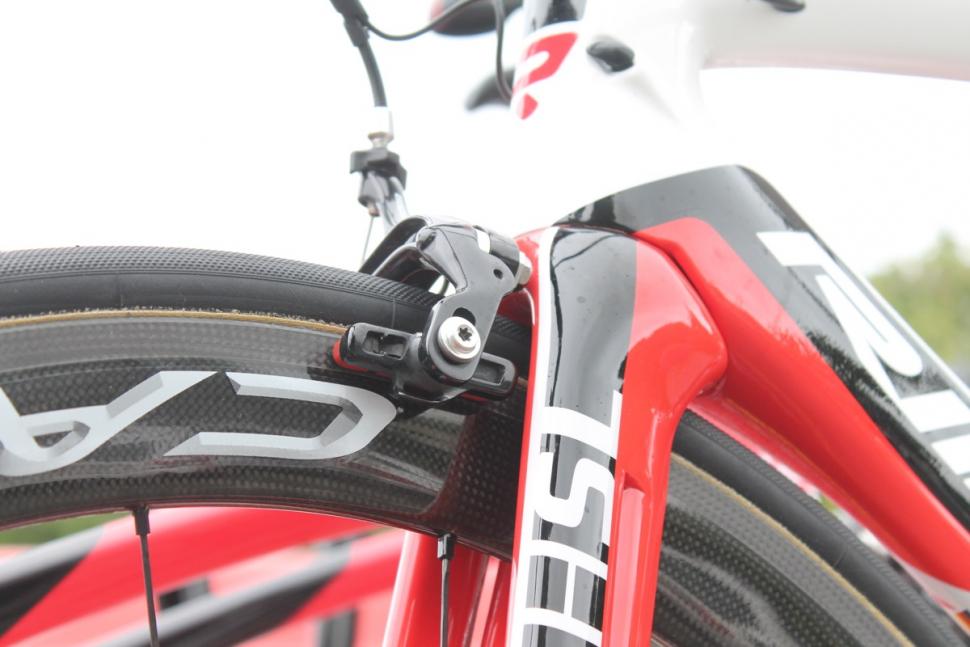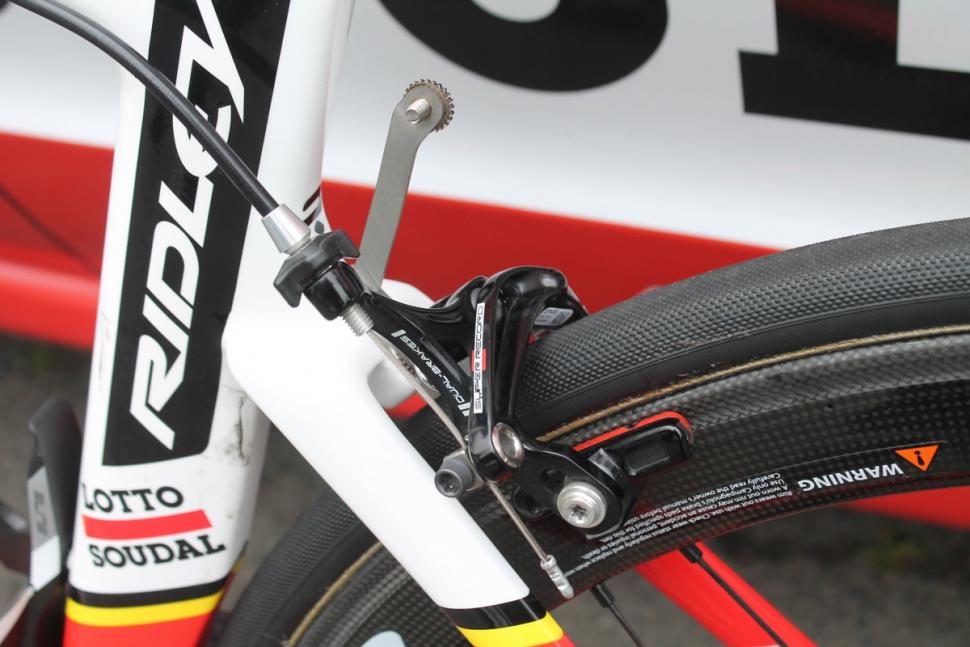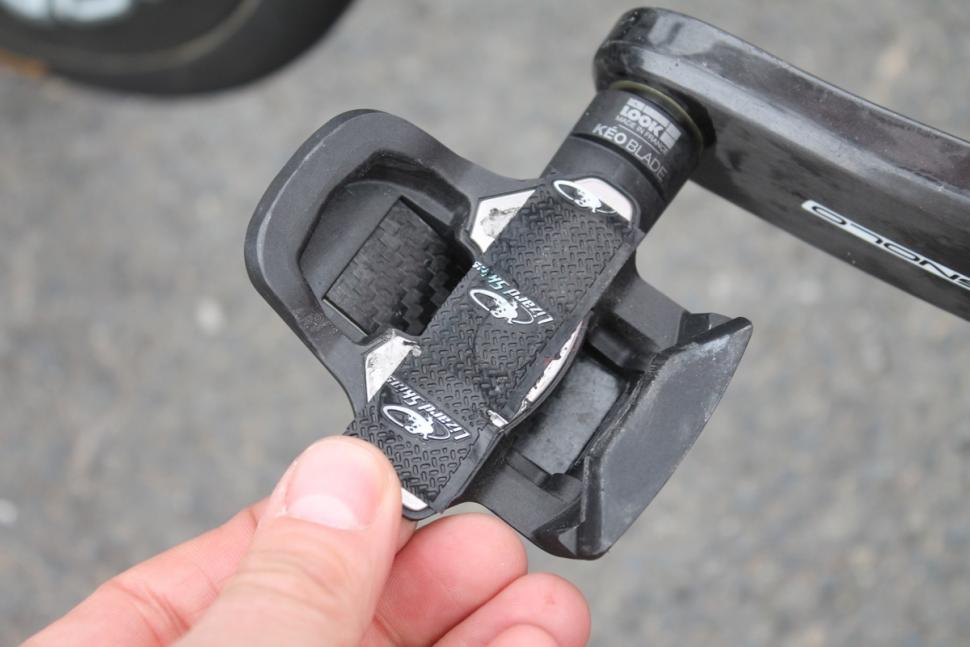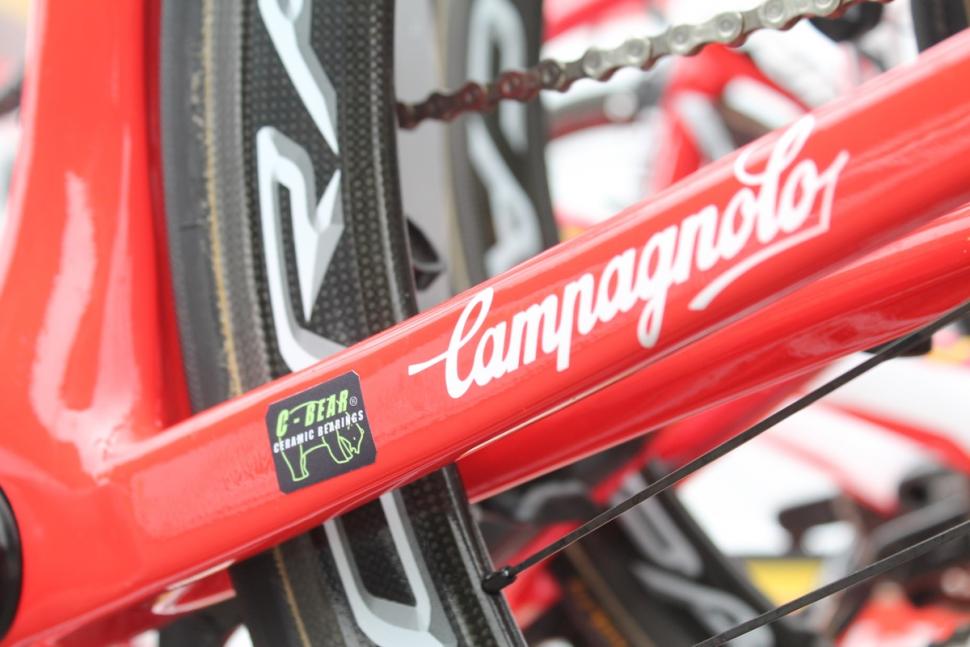- News
- Reviews
- Bikes
- Accessories
- Accessories - misc
- Computer mounts
- Bags
- Bar ends
- Bike bags & cases
- Bottle cages
- Bottles
- Cameras
- Car racks
- Child seats
- Computers
- Glasses
- GPS units
- Helmets
- Lights - front
- Lights - rear
- Lights - sets
- Locks
- Mirrors
- Mudguards
- Racks
- Pumps & CO2 inflators
- Puncture kits
- Reflectives
- Smart watches
- Stands and racks
- Trailers
- Clothing
- Components
- Bar tape & grips
- Bottom brackets
- Brake & gear cables
- Brake & STI levers
- Brake pads & spares
- Brakes
- Cassettes & freewheels
- Chains
- Chainsets & chainrings
- Derailleurs - front
- Derailleurs - rear
- Forks
- Gear levers & shifters
- Groupsets
- Handlebars & extensions
- Headsets
- Hubs
- Inner tubes
- Pedals
- Quick releases & skewers
- Saddles
- Seatposts
- Stems
- Wheels
- Tyres
- Health, fitness and nutrition
- Tools and workshop
- Miscellaneous
- Buyers Guides
- Features
- Forum
- Recommends
- Podcast
TECH NEWS
 Tour de France 2016 Greipel - 2.jpg
Tour de France 2016 Greipel - 2.jpgTour Tech 2016: Andre Greipel’s Ridley Noah SL
Lotto Soudal’s Andre Greipel has yet to win a stage in the 2016 Tour de France, a fact many will find somewhat surprising in that he had won two at this point in last year's race and has a career total of 10 Tour stage victories to his name.
Of course, Greipel's lack of success this year is largely down to a resurgent Mark Cavendish who has three wins, edging Greipel out by a tyre's depth on stage three to Angers.
There's a long way to go yet, and plenty more opportunities for Greipel to get one over on his sprint rivals. Here’s everything you need to know about the bike upon which he'll be trying to do it.
The Noah SL, launched in 2014, is a lighter version of Ridley’s long-standing Noah Fast. A number of changes have resulted in a 950g frame weight, according to Ridley. That doesn’t put it among the lightest frames in the peloton, but it’s a highly respectable weight for an aero road bike.
Underneath the paint, Ridley says that it has reworked the resin and the carbon layup to reduce the weight without compromising stiffness. If you put out the power that Greipel does in a sprint, that stiffness is vital.
You can easily see that the Noah SL is designed with aerodynamics in mind. The tube profiles are narrow and deep while the seat tube is cutaway around the leading edge of the seat tube to manage airflow in that area. The seatstays join the seat tube low down to reduce the size of the bike’s frontal area while the fork is integrated into the frame to reduce turbulence there.
That F-Split fork is one of the Noah SL’s key features. Two slots run vertically down each fork leg, one above the other, so each leg has a small gap down the middle.
The idea is to allow air to flow through these slots, reducing the air pressure between the fork legs and the wheel in order to reduce drag.
Rather than the integrated V-brakes of the Noah Fast, the Noah SL is fitted with regular calliper brakes. These are sited in conventional positions on the front of the fork and behind the seatstays.
The Noah SL also features an aero seatpost with the seat clamp hidden inside the top tube, a tapered head tube and internal cables/wires.
The bottom bracket is BB30. This oversized design is intended to provide loads of stiffness to hold everything in place. That’s super-important when you have someone like Andre Greipel on board.
Lotto Soudal is sponsored by Campagnolo and the riders use Super Record EPS groupsets with electronic shifting (EPS stands for Electronic Power Shift). Unlike with Shimano’s Di2 system, the upshift button and the downshift lever are sited well away from one another; you operate one with your thumb and the other with your index finger so it’s virtually impossible to shift accidentally in the wrong direction when things hot up in a full-on sprint.
The wheels are carbon-rimmed Campagnolo Bora Ultras in a 50mm depth. They also come in 35mm and 85mm flavours. They’re fitted with Continental Competition Pro Ltd tyres that are available to sponsored athletes only.
Greipel uses an SRM power meter and this bike, which we photographed before stage one, is fitted with a 54-tooth outer chainring.
The pedals are Look Keo Blade 2 Ti with titanium axles. Unusually, a strip of Lizard Skins bar tape is stuck across the central stainless steel plate. We’re not exactly sure why but we guess it must be to reduce cleat/foot movement on the pedal or to avoid the possibility of any play.
A sticker on the chainstay says that the bike is fitted with C-Bear ceramic bearings, C-Bear being a Belgian company. www.c-bear.com
Mat has been in cycling media since 1996, on titles including BikeRadar, Total Bike, Total Mountain Bike, What Mountain Bike and Mountain Biking UK, and he has been editor of 220 Triathlon and Cycling Plus. Mat has been road.cc technical editor for over a decade, testing bikes, fettling the latest kit, and trying out the most up-to-the-minute clothing. We send him off around the world to get all the news from launches and shows too. He has won his category in Ironman UK 70.3 and finished on the podium in both marathons he has run. Mat is a Cambridge graduate who did a post-grad in magazine journalism, and he is a winner of the Cycling Media Award for Specialist Online Writer. Now over 50, he's riding road and gravel bikes most days for fun and fitness rather than training for competitions.
Latest Comments
- john_smith 2 hours 37 min ago
Straight into the sun is perhaps an exaggeration, but at that time it would be about ESE, and there are bits of the road which head roughly SSE, so...
- john_smith 2 hours 47 min ago
7 October was just a bit of harmless fun until the "msm" ramped it up.
- hawkinspeter 2 hours 47 min ago
It's not censored if you just pirate it
- stonojnr 3 hours 51 min ago
an example of Kesgraves "best cycling infrastructure in the country" https://maps.app.goo.gl/GsCMbzDUTPdq59qS9
- ktache 3 hours 55 min ago
They are not going full gas at every point. They would destroy themselves. And tactics, they save themselves for when effort is really needed....
- wookey 4 hours 4 sec ago
It turns out that that is national police policy. We found out from this process that there is national 'secured by design' policy which causes...
- mtbtomo 4 hours 39 min ago
Been available for quite a while, full GRX mechanical 12 speed. Probably around the same time as 105 mechanical 12 speed if I were to guess.
- TheBillder 4 hours 45 min ago
Less harmful citrus degreaser is easy to find at £8 or less for 5 litres. Works ok for me, even diluted up to 4:1. Both paraffin and white spirit...
- Veganpotter 4 hours 50 min ago
Nope, it's to keep your straps down and quieter. Plus most sunglasses are polycarbonate and aren't going to shatter like glass anyway
- Steve K 5 hours 21 min ago
And, more seriously, where's the coverage of the closure of the cycle lane which forces you to cycle on the Totton bypass.





Add new comment
5 comments
That's the rider number holder.
what's that metal thing poking from the rear brake?
It always amazes me that those rear wheels, with such few spokes, can handle the torque and stress of the Gorilla when he's sprinting and putting out 2,000W
What's that, 54/42 on the front and 11-23 on the back? Proper hard man gearing!
He reckons he lost it on stage 2 because he instinctively threw it in the hardest gear. Said if it was one gear lower he'd have had it.